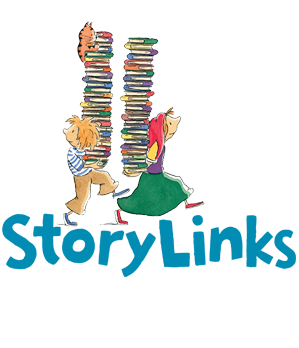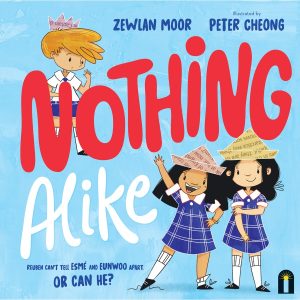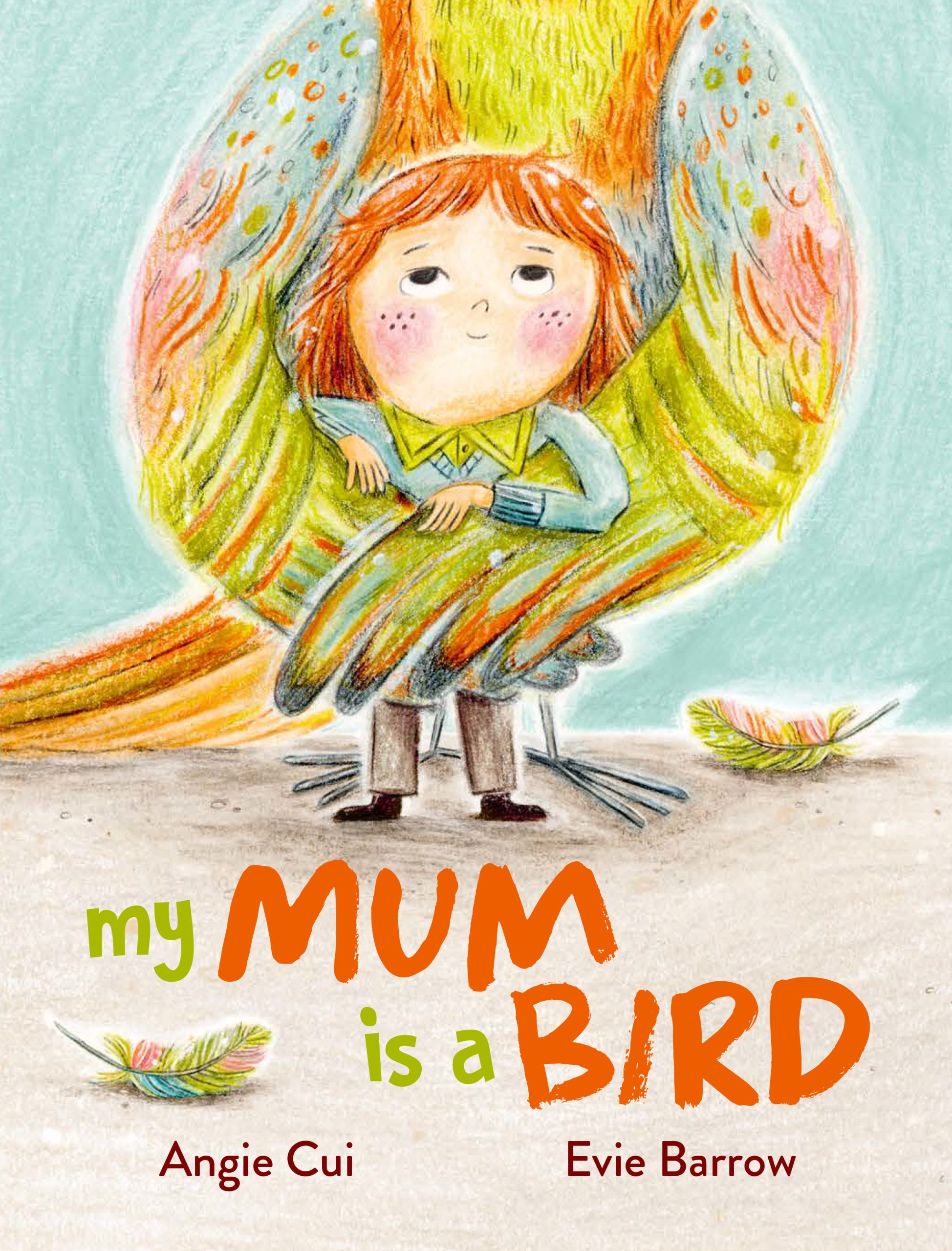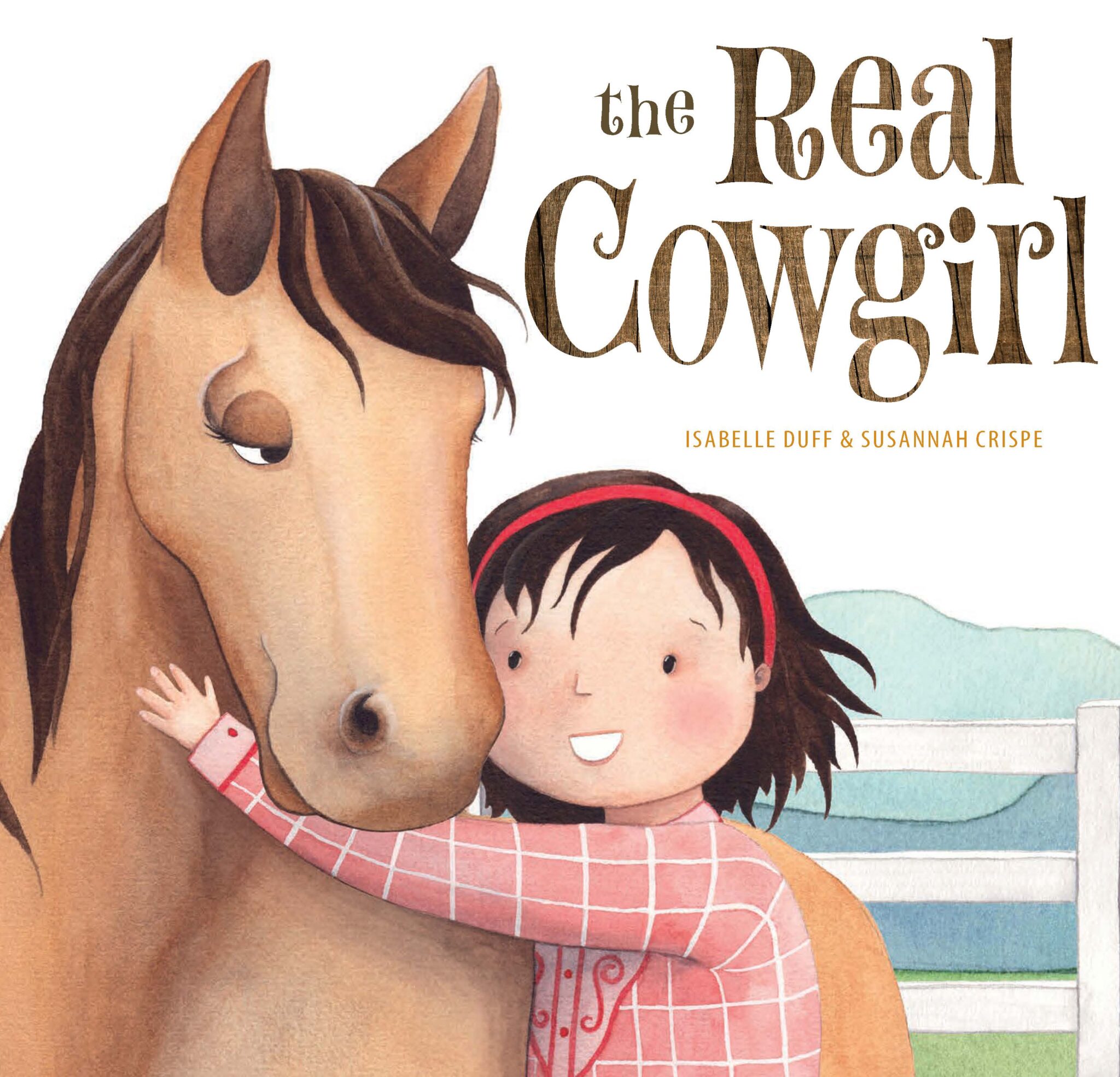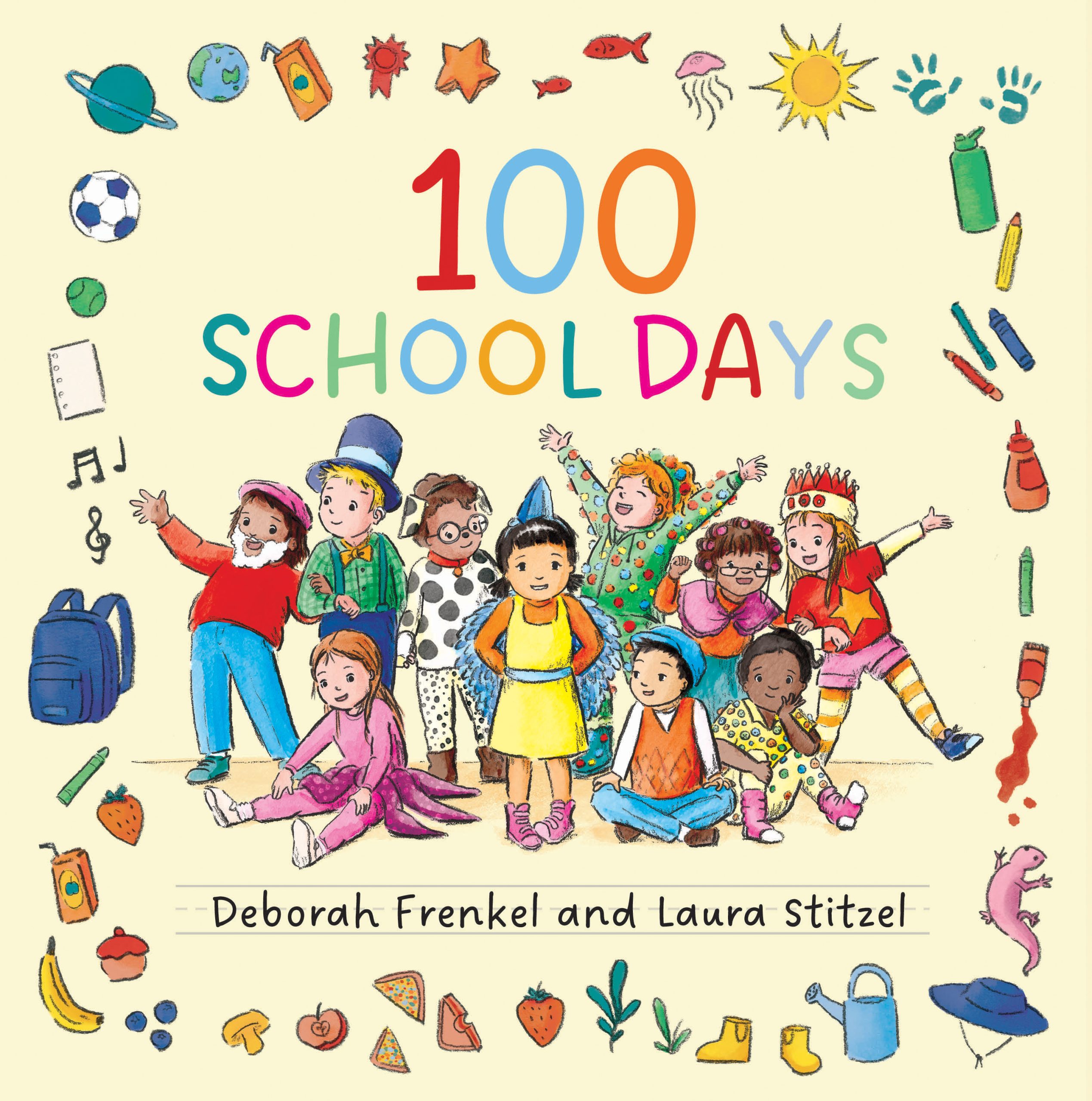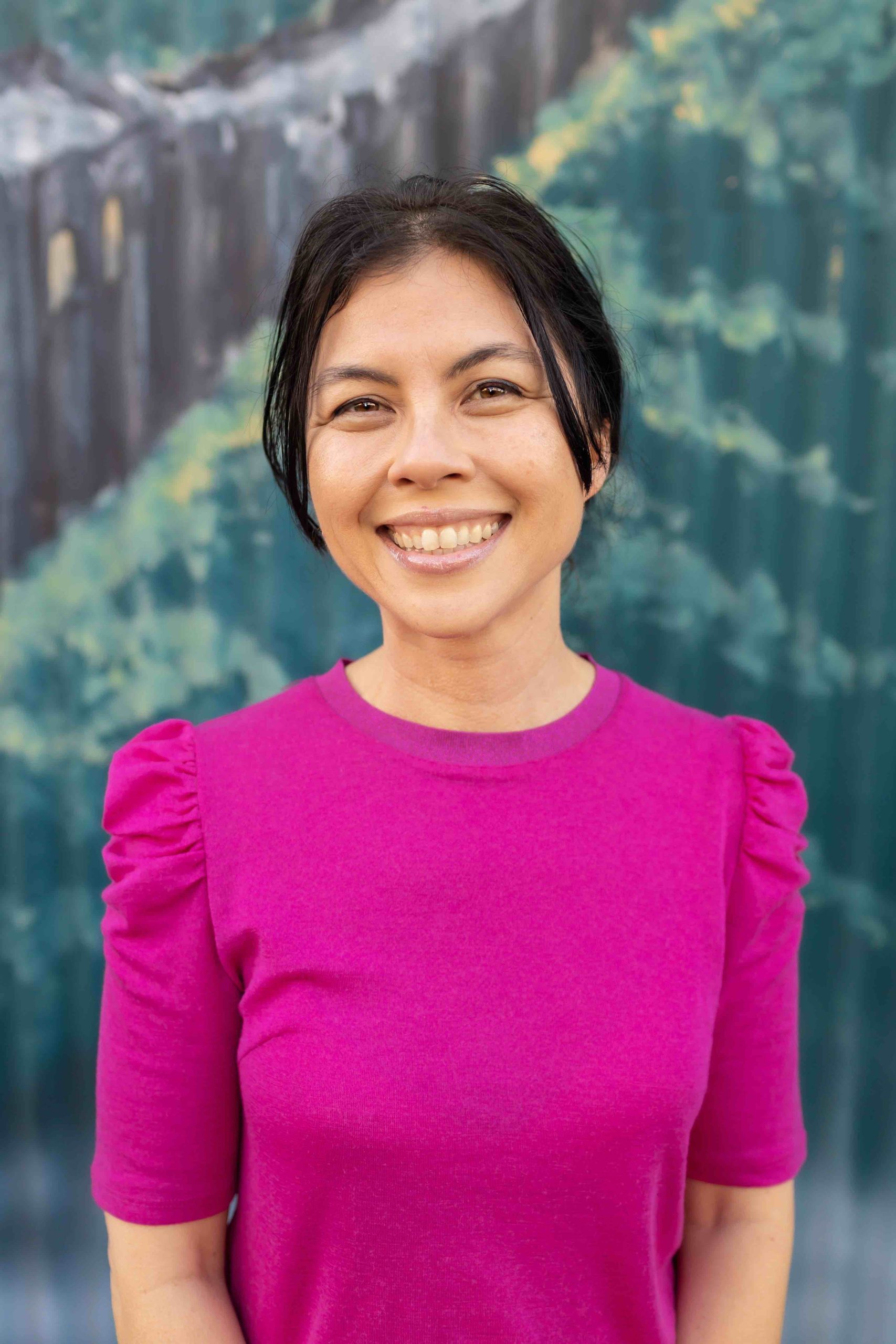
Meet the Author: Zewlan Moor
By Mia Macrossan
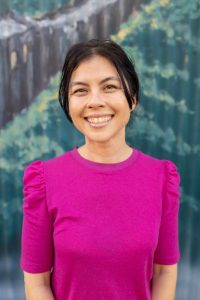 Zewlan (pronounced Shoolen) is a medical doctor who also has a literature degree and a passion for writing and sharing children’s stories. She started Byron Bibliotherapy after feedback from patients who found it helpful when she recommended specific fiction works to them. She reviews regularly for StoryLinks and was one of the judges for the 2022 Book Links Award for Children’s Historical Fiction.
Zewlan (pronounced Shoolen) is a medical doctor who also has a literature degree and a passion for writing and sharing children’s stories. She started Byron Bibliotherapy after feedback from patients who found it helpful when she recommended specific fiction works to them. She reviews regularly for StoryLinks and was one of the judges for the 2022 Book Links Award for Children’s Historical Fiction.
Her knowledge of children’s books is both wide and deep and it is with great pleasure that we welcome the publication of her own first picture book Nothing Alike, a light-hearted look at the serious topic of race, perception and stereotyping, and the phenomenon of #sorrywrongasian.
In Nothing Alike Reuben thinks his classmates Esmé and Eunwoo look so similar that he can’t tell them apart. But the more that Reuben thinks about it, the more he realises that Esmé and Eunwoo are very different people, and he can tell them apart.
Your story is published by Bright Light, an imprint of Hardie Grant Children’s Publishing whose books shine a light on essential conversations. What are the conversations that you hope will springboard from reading Nothing Alike?
I hope the book will inspire conversations about race, perception, similarities and differences, and being a better friend. And I hope Nothing Alike is embraced widely, not just in schools with a high Asian-Australian or multicultural population. I hope it is considered just as much of an Australian book as my upcoming The Bill Dup. At the same time, I hope overseas markets overlook the Australian-ness of the school uniforms and see its potential as a universal conversation-starter about a tricky topic.
Why is it important to talk about race and perception to young children?
Young children are part of our culture, and until we live in a utopian world where racism doesn’t exist, I think we should discuss race and racism matter-of-factly with children as early as possible. If we don’t talk with our children honestly about the challenges we sometimes face when interacting with people from a different background, those children may grow up avoiding the topic or sweeping it under the rug, and never being able to discuss implicit bias, structural racism and other structural inequalities.
I noticed recently that my children have an unusual view of what being racist is. If I mention the word “Asian”, I am pulled up for being racist. It seems I’m not alone in this. It happened to an Indian-Australian friend, whose son said she couldn’t use the word “black”. Another Anglo-Australian friend’s late teens children also thought my manuscript was problematic (“racist”) for highlighting the complexities of relationships and interactions when race and ethnicity are overlaid. In the case of my children, I had to point out that saying someone is Asian is stating a fact. Saying a stereotype, for example “They’re good at Maths because they’re Asian”, or saying that being Asian is a negative thing, for example, “Those damn Asians”, is racist. I worry that a society only focusing on the positives of “harmony”, and never the realities of multiculturalism, might deny the lived experience of many children.
A recent study showed that children both witness and experience racism in schools: Almost two thirds, and (60%) of students say they have witnessed racism in school. Around a third (33%) of state-school students have experienced racism from their peers. 43% of students reported they witnessed teachers discriminating against other students based on their race, including one study which found that around 20% of Asian-Australian students experienced racial discrimination from their teachers.
Children may also witness racism directed to adults in the community. To be continually told that their experiences don’t exist because race doesn’t exist, must leave many children feeling anxious, unable and unwilling to talk about their feelings. As well as this, a lot of well-meaning people think that talking about race will cause racism, but the opposite is actually true. I think this is something most of us need to learn about, and most people have implicit biases they might not be aware of. I know I do! Do the Harvard test for hidden bias and see how you go.
To learn more: Test yourself for hidden bias; How to discuss racism with children; Changing perspectives on racism in schools
Is there a scientific reason why people of one ethnicity have difficulty distinguishing between people who are of a different ethnicity?
Yes, there have been studies that show that human babies focus more on human faces than other things. Of these, they focus most on their caregivers. But they have also been shown to look longer at other people of the same ethnicity as their caregivers. The theory is that, in an evolutionary sense, the skill of identifying your clan was protective. It enabled people to choose the side most likely to protect them.
Much like the fight-or-flight response was protective in terms of escaping from threats, such as a bear, these inbuilt responses are not necessarily the most useful or productive skill for our modern lives. In our increasingly globalised and multicultural world, being able to forge relationships with people from other ethnic groups is a vital skill.
What are these consequences and how does that affect the functioning of the individual?
Some of the stories from the #sorrywrongasian thread on Twitter/X point to serious consequences. In workplaces people have been repeatedly cc’d into minutes for meetings they didn’t attend, or not received minutes from meetings they did attend because they have been mistaken for the other Asian person in the office, often from another department. People are sure they have been passed up for promotion because they have been mistaken for a less diligent colleague.
When people are embarrassed or ashamed about not being able to tell people from another ethnic group apart, there is a tendency to repress that negative emotion and displace it, often onto the “offending” person or group. “It’s not my fault—they all look the same!”Of course, this doesn’t just happen with Asian people. It also extends to stereotypes about other races, as well as other groups, such as LGBTQI+, “dole-bludgers”, intellectuals, and bogans, and is perpetrated across all social classes and sectors.
It’s the sort of behaviour I witnessed in my childhood and teens and, while things are improving, I have seen similar behaviours of exclusion and segregation in my kids’ social circles. It’s the sort of behaviour I wanted to nip in the bud with my son, but in a gentle way that didn’t leave him feeling ashamed.I love celebratory and uplifting books about multiculturalism, but we can’t deny that prejudice exists in our world. Giving kids the tools to reflect on their own social circle and the wider community, and the sort of people they want to be, is vital.
Nothing Alike is illustrated by Peter Cheong, author and illustrator of Every Night at Midnight. How did his view of the story match with yours? Did you find aspects surprising, unexpected or that you hadn’t thought of?
It must have been a challenging brief for Peter—to somehow portray the girls (and the boys, as a young reader recently reminded me!) as the same but different. My illustration notes were more conceptual and philosophical, focusing on perception and how it changes as we learn to observe closely. I think I had Brendan Wenzel’s They All Saw a Cat in mind.
Peter brought a fresh and vivid style, a commercial sensibility that will hopefully appeal to a wide audience. He conveys energy and movement so well, using unexpected angled views to capture drama and a sense of achievement in the monkey bars scenes (what I consider the climax and resolution of the story.) I love Peter’s use of white space, and I keep seeing new things each time I read the book. The other day a kid pointed out that Eunwoo’s bun on the final page is in the shape of an apple!
I’m thrilled that Peter connected with the manuscript enough to agree to illustrate it, just when his own author-illustrator career was taking off. I’m only a little bit jealous that his one line in the book upstaged all of mine in the humour stakes! See his dedication: “To my brother, Michael, who was mistaken for me at my own wedding. 🙂 – P.C.” It says it all really!
What was your favourite story growing up? Why?
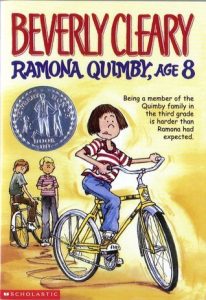 I have spoken extensively on the Kidlit Classics podcast with Samantha-Ellen Bound about the book that really made me into a reader: Ramona Quimby Age 8. This book had it all. It was a school story about an ordinary kid in an ordinary family doing ordinary things. It was funny, without being slapstick or over-the-top, and it took kids’ concerns seriously. I related intensely to Ramona’s feelings, although I suspected I was more of a Beezus than a Ramona at the time. Now I think most of us are a mixture of both.
I have spoken extensively on the Kidlit Classics podcast with Samantha-Ellen Bound about the book that really made me into a reader: Ramona Quimby Age 8. This book had it all. It was a school story about an ordinary kid in an ordinary family doing ordinary things. It was funny, without being slapstick or over-the-top, and it took kids’ concerns seriously. I related intensely to Ramona’s feelings, although I suspected I was more of a Beezus than a Ramona at the time. Now I think most of us are a mixture of both.
Some other favourites were books that combined romance with adventure, like My Sister Sif and Playing Beatie Bow by Ruth Park; and The Devil’s Own by Deborah Lisson. I also frequently think of People Might Hear You by Robin Klein; Just as Long as We’re Together by Judy Blume; The Owl Service by Alan Garner; Pastures of the Blue Crane by HF Brinsmead; The Pied Piper by Nevil Shute and A Little Princess by Frances Hodgson Burnett.
My favourite picture books were When the Wind Changed by Ruth Park and Deborah Niland and Burglar Bill by Janet and Allan Ahlberg.
Finally can you tell us about what is next for you?
Yes, I am very excited about the release of The Bill Dup, about a young boy’s first experience of rain. Once again, it is a first-person narrative from the point-of-view of a young boy. It was lovingly illustrated by Simon O’Carrigan and brought to life by Cristina Pase at Windy Hollow. The build up to this book has been slow and steady, but it’s heating up to a humid frenzy right about now!
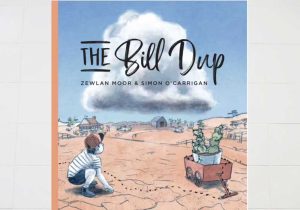
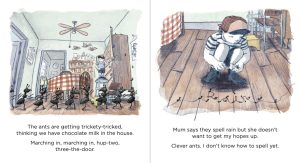 Zewlan talks about her next book The Bill Dup here: https://youtu.be/c3Sb36UPGGY
Zewlan talks about her next book The Bill Dup here: https://youtu.be/c3Sb36UPGGY
The Bill Dup (illustrated by Simon O’Carrigan, Windy Hollow Books) is available for preorder in bookstores and online now, for delivery in October 2023.
Links:
Byron Bibliotherapy
Nothing Alike Teacher’s Notes
Peter Cheong
Thank you Zewlan, for speaking to StoryLinks

